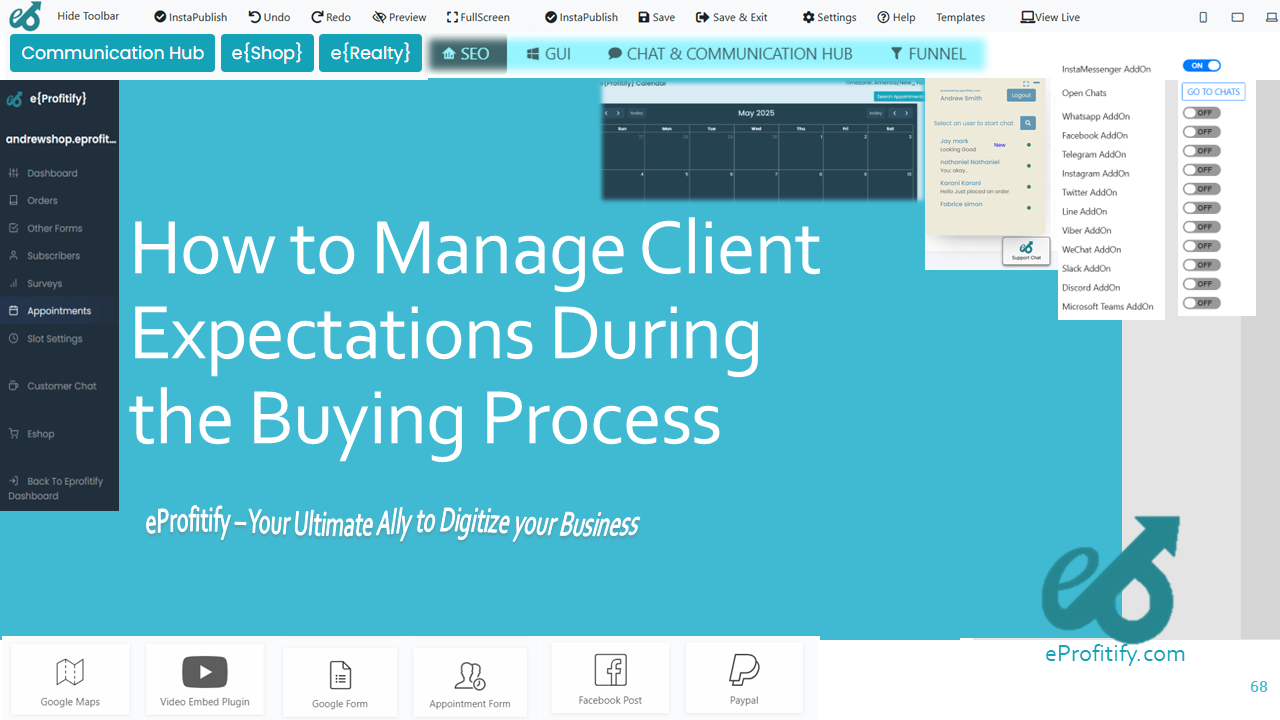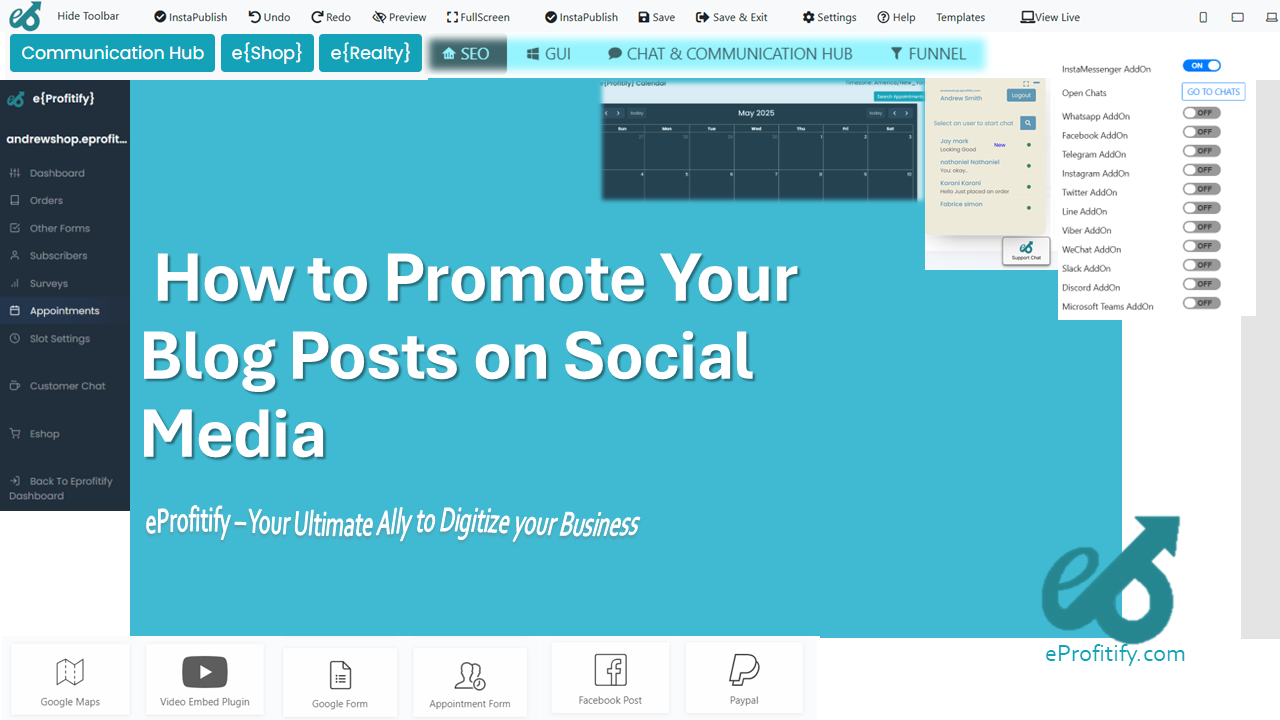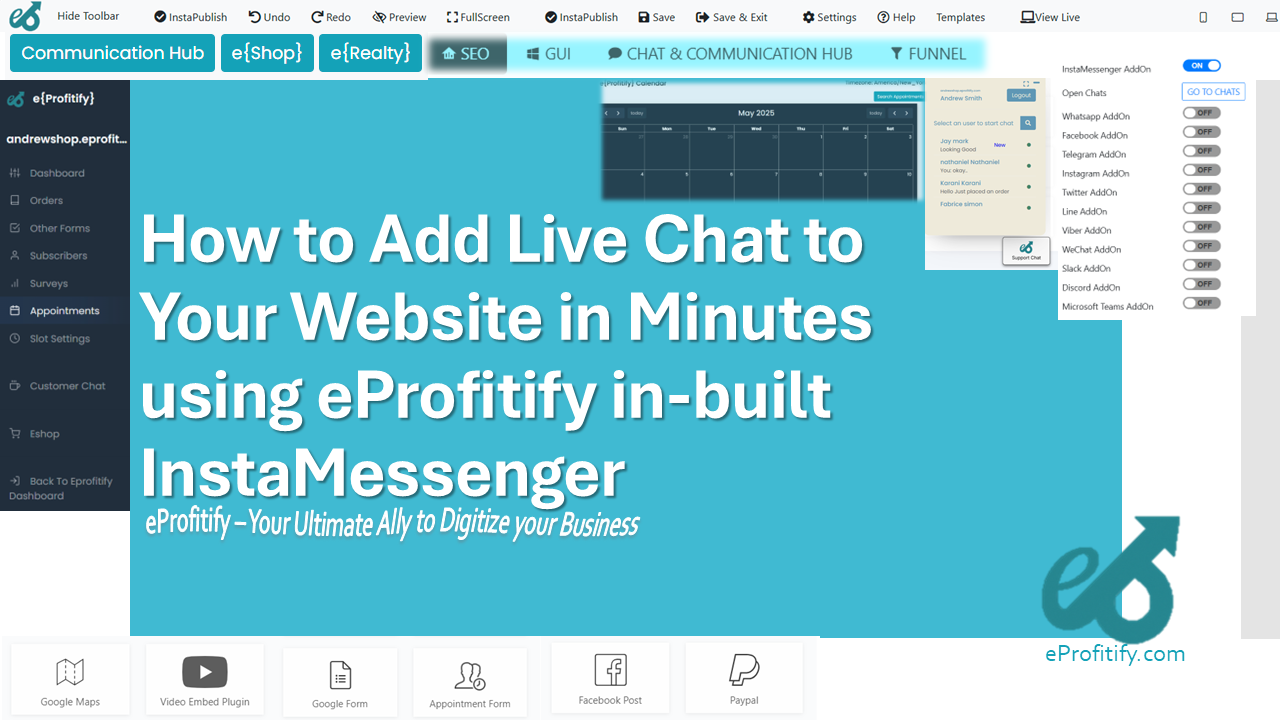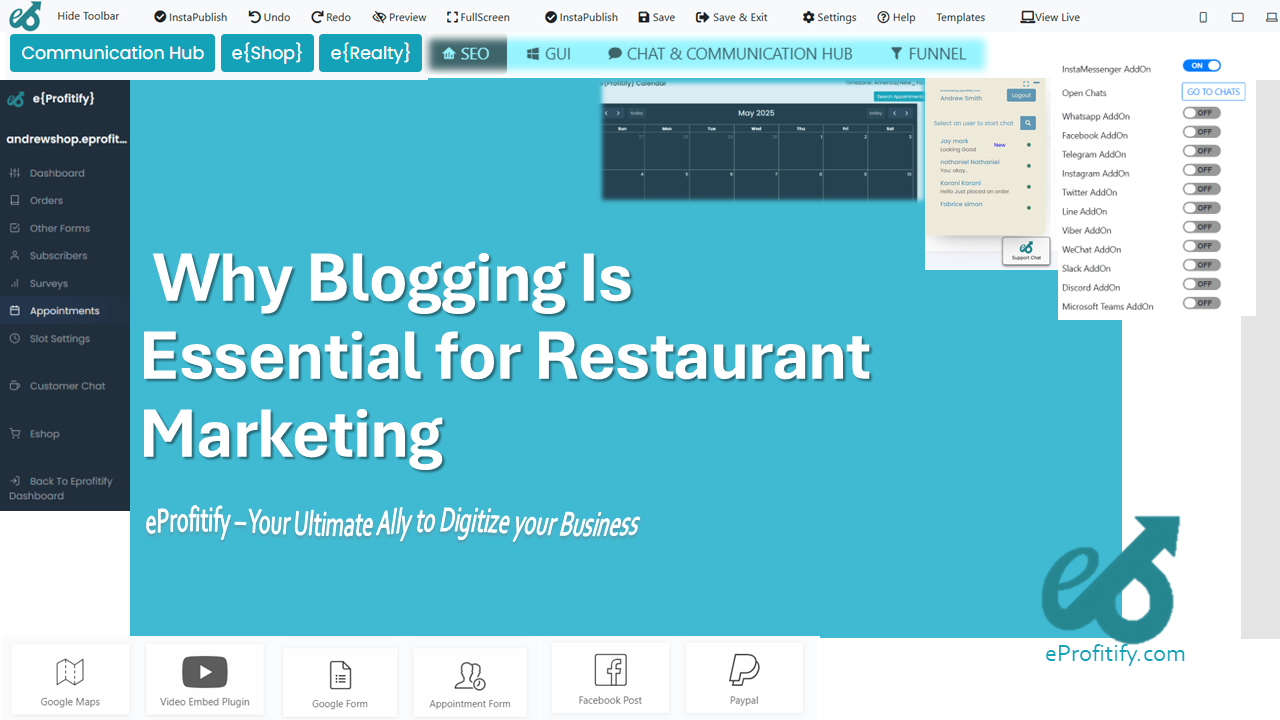How to Manage Client Expectations During the Buying Process

How to Manage Client Expectations During the Buying Process
Managing client expectations is a cornerstone of successful business transactions. When customers understand what to expect—and those expectations are met—they’re more likely to trust your brand, complete purchases, and return for future engagements. However, misaligned expectations can lead to frustration, negative reviews, and lost revenue. According to a Microsoft report, 58% of consumers cite poor communication as a reason for cutting ties with a business, underscoring the need for proactive expectation management. In this context, leveraging tools like eProfitify, a leading website publishing and management platform, can streamline processes and enhance transparency. Let’s explore actionable strategies for managing client expectations, supported by statistics, and examine how eProfitify’s features—including instant messaging, CRM, and ecommerce integrations—make it indispensable.
1. Prioritize Clear Communication
Effective communication is the bedrock of expectation management. Clients want updates in real time, with 73% of buyers expecting companies to understand their needs (Salesforce). Tools like eProfitify’s instant messaging feature enable businesses to respond swiftly, reducing the 48-hour response window that 82% of customers anticipate (HubSpot). By embedding live chat or automated updates directly into your website, you address queries immediately, preventing misinformation or assumptions. For example, clarifying shipping timelines or product specs in real time eliminates ambiguity and builds trust.
2. Set Realistic Timelines
Overpromising is a common pitfall. A study by Qualtrics found that 67% of customers get frustrated when businesses fail to deliver on time. Use eProfitify’s appointment management system to schedule consultations, deliveries, or follow-ups accurately. Automated






